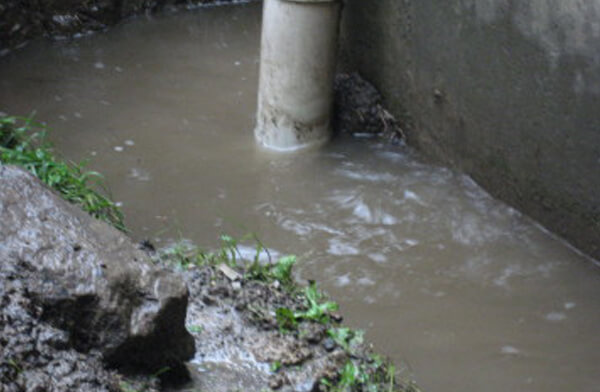6 Methods to Identify Hidden Water Line Leaks Efficiently
6 Methods to Identify Hidden Water Line Leaks Efficiently
Blog Article
Right here below you can find some really good content relating to Locating water leaks.

Early detection of dripping water lines can mitigate a prospective disaster. In addition to saving you money, it will reduce the stress and aggravation. The minute you discover a leak, calling your plumber for repair services is the best service. Nonetheless, some tiny water leakages might not be visible. If you can not detect it with your naked eyes, here are some hacks that assist.
1. Check Out the Water Meter
Examining it is a guaranteed way that helps you uncover leaks. If it moves, that shows a fast-moving leakage. This suggests you may have a slow-moving leakage that could also be underground.
2. Examine Water Consumption
Examine your water costs as well as track your water intake. As the one paying it, you ought to discover if there are any type of discrepancies. If you find sudden changes, in spite of your consumption coinciding, it implies that you have leakages in your plumbing system. Bear in mind, your water expense should drop under the exact same array on a monthly basis. An unexpected spike in your expense shows a fast-moving leak.
A steady increase every month, even with the same practices, shows you have a sluggish leakage that's likewise gradually rising. Call a plumber to extensively examine your building, particularly if you feel a warm location on your flooring with piping below.
3. Do a Food Coloring Test
30% comes from commodes when it comes to water usage. Test to see if they are running appropriately. Drop specks of food shade in the container and also wait 10 minutes. If the color somehow infiltrates your dish during that time without flushing, there's a leak between the container as well as bowl.
4. Asses Outside Lines
Don't fail to remember to check your exterior water lines also. Needs to water seep out of the link, you have a loose rubber gasket. One small leak can lose tons of water and surge your water costs.
5. Check and also Evaluate the Scenario
Property owners must make it a habit to inspect under the sink counters as well as also inside cabinets for any kind of bad odor or mold and mildew development. These two warnings suggest a leak so timely attention is required. Doing regular evaluations, even bi-annually, can save you from a significant trouble.
If you understand your residence is already old, keep a watchful eye on your heating systems, tubes, pipelines etc. Look for stainings as well as compromising as many appliances as well as pipes have a life span. They will additionally naturally weaken as a result of tear and use. Do not wait for it to intensify if you think dripping water lines in your plumbing system. Call a professional plumber right now so you don't wind up with a terrible mess in your home.
Early discovery of dripping water lines can mitigate a prospective disaster. Some tiny water leakages may not be visible. Inspecting it is a surefire way that assists you uncover leakages. One little leak can squander heaps of water and also increase your water expense.
If you presume leaking water lines in your plumbing system, don't wait for it to escalate.
How to Know If Your Home Has a Hidden Leak
Water Meter Reveals Inexplicable Water Usage
If you’d like to test whether or not there’s a leak somewhere in your home, you can do this using your water meter. Here is how to conduct the test:
Don’t use any water in your home for at least 30 minutes; this also means not turning on faucets or water-using appliances.
Go outside, and check your water meter for activity.
If your water meter shows that there was activity, even though no one was using any water, this proves that there is a leak in your home.Visible Mold or Mildew Growth
Leaks behind walls create moist, dark environments that allow mold and mildew to grow and thrive. Eventually, you might see mold growth forming on the wall closest to a hidden leak.
If mold is growing in an area that receives a high amount of moisture, such as a bathroom, it may simply be an indication that better ventilation is needed. However, if you see mold growth on a wall or the ceiling in an area where you would not expect, you probably have a hidden leak.
Musty, Mildew Odor
Sometimes you might not be able to see the mold or mildew that is growing as a result of a leak. However, the smell can give the problem away just as easily. If you catch a whiff of something musty, there’s a good chance that old water is collecting somewhere in your home that you can’t see.
Stained/Warped Walls, Ceilings, or Floors
When your home soaks up water, a variety of red flags can become visible, including ceiling stains, bubbling drywall, warped walls, and sagging floors. While these issues can be caused by excess humidity, they can also be signs that a pipe or plumbing connection has started leaking behind your walls.
Inexplicably High Water Bill
After a while, you get a general sense for what your water bill should be. If you own a pool or sprinkler system, your bill will tend to be higher during summer. However, if you receive a water bill that seems especially high, and you can’t figure out what caused it, then you may have a hidden leak somewhere that’s increasing your bill.
https://www.plumbingjoint.com/blog/2019/july/how-to-know-if-your-home-has-a-hidden-leak/

I discovered that piece of writing on Detecting hidden plumbing leaks when browsing the web. Sharing is nice. Helping others is fun. Thank you for going through it.
Get it sorted! Report this page